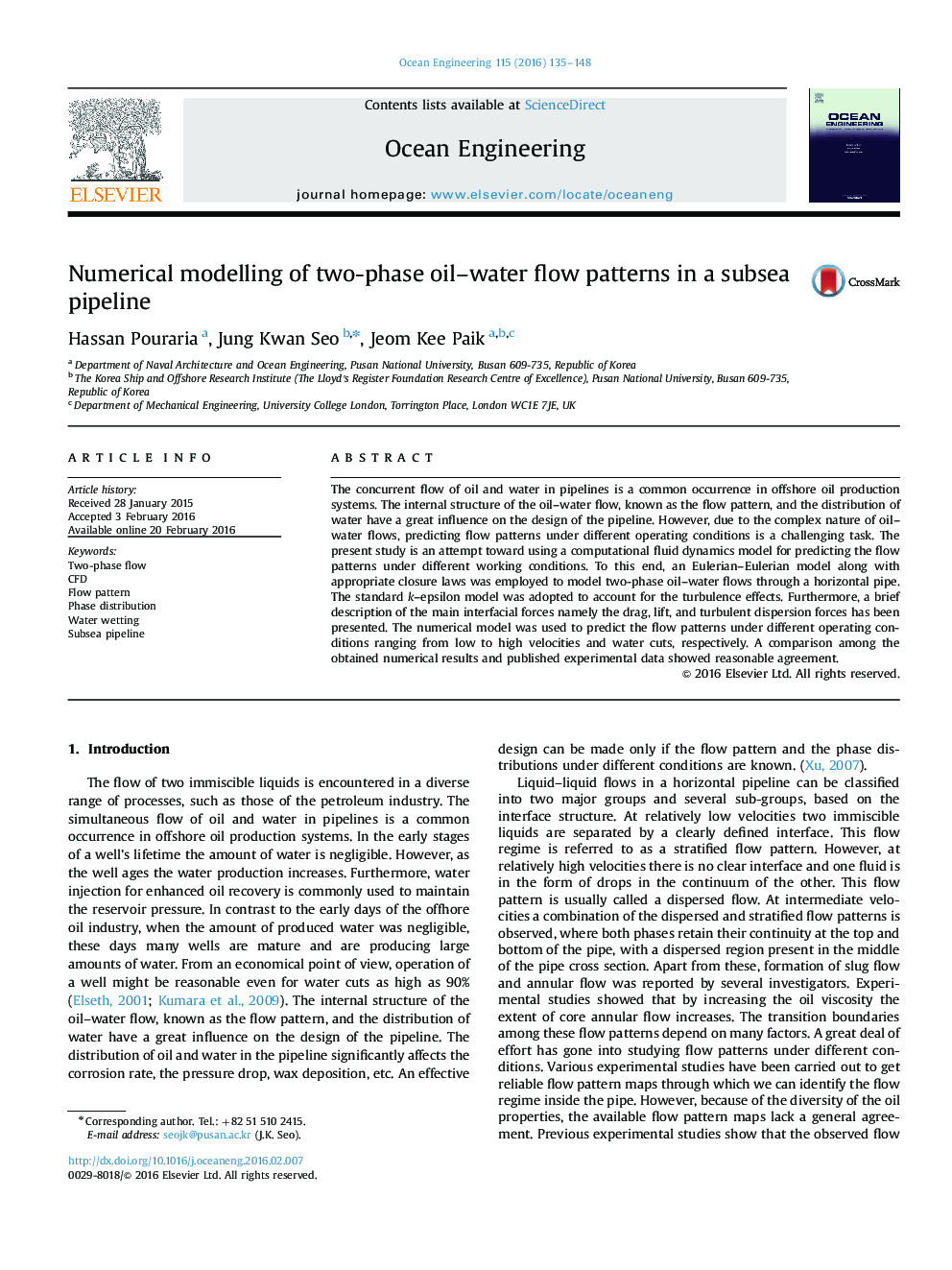| کد مقاله | کد نشریه | سال انتشار | مقاله انگلیسی | نسخه تمام متن |
|---|---|---|---|---|
| 1725197 | 1520675 | 2016 | 14 صفحه PDF | دانلود رایگان |
• A CFD model is employed to predict different flow patterns of oil–water flow.
• Validation of the used model was examined in a wide operation condition.
• By increasing the velocity, the critical water cut required for water wetting increases.
The concurrent flow of oil and water in pipelines is a common occurrence in offshore oil production systems. The internal structure of the oil–water flow, known as the flow pattern, and the distribution of water have a great influence on the design of the pipeline. However, due to the complex nature of oil–water flows, predicting flow patterns under different operating conditions is a challenging task. The present study is an attempt toward using a computational fluid dynamics model for predicting the flow patterns under different working conditions. To this end, an Eulerian–Eulerian model along with appropriate closure laws was employed to model two-phase oil–water flows through a horizontal pipe. The standard k–epsilon model was adopted to account for the turbulence effects. Furthermore, a brief description of the main interfacial forces namely the drag, lift, and turbulent dispersion forces has been presented. The numerical model was used to predict the flow patterns under different operating conditions ranging from low to high velocities and water cuts, respectively. A comparison among the obtained numerical results and published experimental data showed reasonable agreement.
Journal: Ocean Engineering - Volume 115, 15 March 2016, Pages 135–148
